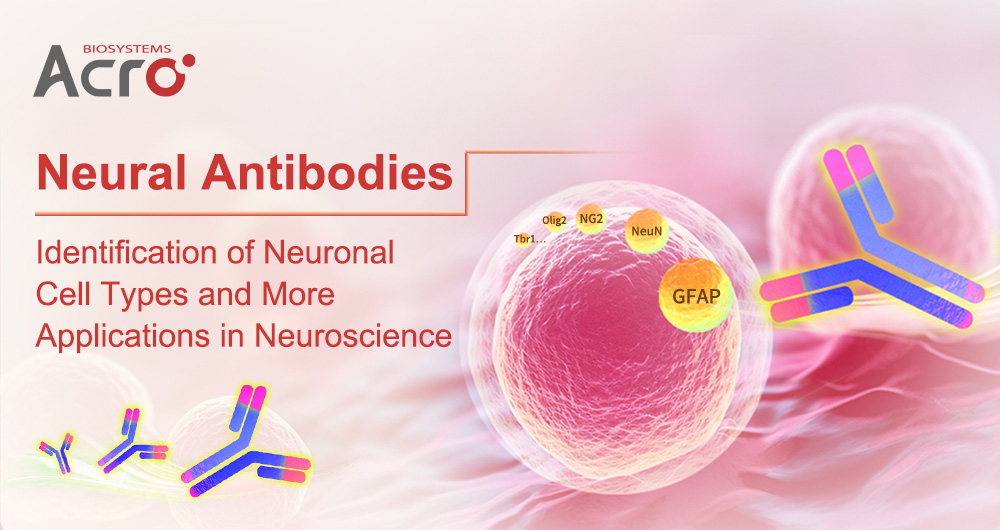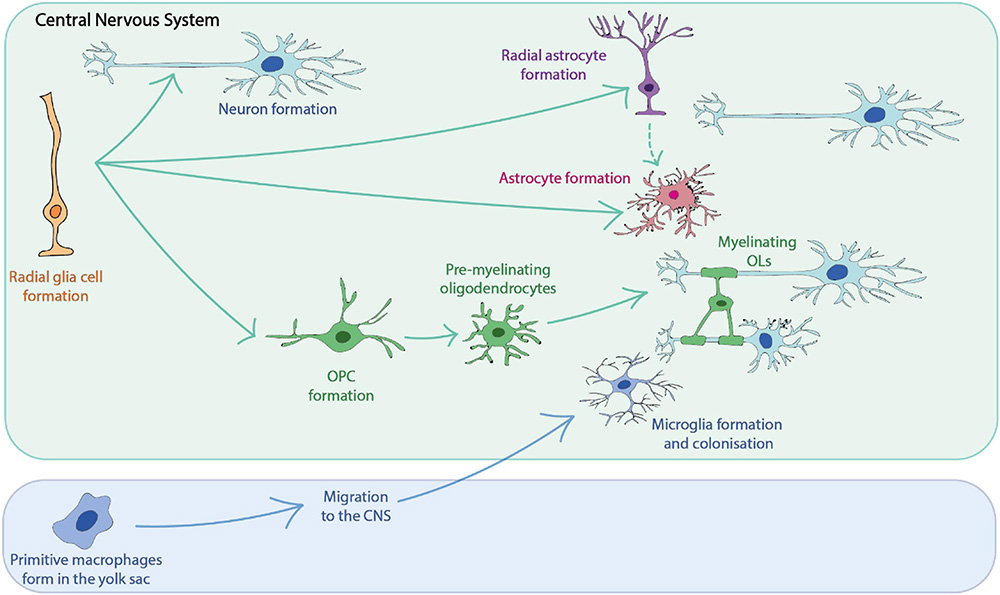
Leave message
Can’t find what you’re looking for?
Fill out this form to inquire about our custom protein services!
Inquire about our Custom Services >>

































 Request a FREE Sample of our FcRn Binding Kit!
Request a FREE Sample of our FcRn Binding Kit! Request a FREE Sample of our Fc gamma RI / CD64 Binding Kit !
Request a FREE Sample of our Fc gamma RI / CD64 Binding Kit !
 Happy Holiday! Limited Keychain here with your next order
Happy Holiday! Limited Keychain here with your next order Limited Edition Golden Llama is here! Check out how you can get one.
Limited Edition Golden Llama is here! Check out how you can get one.
 Request a FREE sample of our GMP products!
Request a FREE sample of our GMP products!  Request a FREE sample of our GMP products!
Request a FREE sample of our GMP products!
> Insights > Neural Antibodies: Identification of Neuronal Cell Types and More Applications in Neuroscience 
The nervous system, orchestrated by diverse neuronal cell types, governs our complex cognitive functions. Accurately identifying these cells have important guiding significance for neuroscience research. Neural antibodies can specifically label and recognize molecules on nerve cells, aiding in distinguishing and identifying various nerve cells and deciphering their roles. These antibodies hold immense potential for unraveling the mechanisms underlying neurodegenerative diseases like Alzheimer's disease (AD) and Parkinson's disease (PD), paving the way for improved diagnosis and targeted therapies. In addition, their applications extend to elucidating neural development, regeneration and drug development.
The Central Nervous System (CNS) is an intricate network build by the coordinate actions of neurons and glial cells. Understanding its development is crucial. Neural progenitor cells in the neuroectoderm differentiate into radial glial cells, which directly or indirectly generate neurons. As development progresses, radial glial cells transform into astrocytes and oligodendrocytes, responsible for supporting neurons and maintaining axonal integrity, respectively. Microglia, derived from embryonic yolk sac monocytes, contribute to immune surveillance and debris clearance within the CNS.

https://doi.org/10.3389/fcell.2021.754606
The development of neuronal and glial cells in the central nervous system
• Identification of Nerve Cell Types
Identification nerve cell types is fundamental to neuroscience research. For example, Oligodendrocyte Transcription Factor 2 (Olig2) antibody is widely used in identifying oligodendrocytes. The anti-human Olig2 polyclonal antibody developed by Yokoo et al. showed significant application potential in immunohistochemical analysis. This antibody can specifically label oligodendrocytes in normal human brain tissue and oligodendrogliomas. However, statistical analysis showed that oligodendrogliomas have a lighter positive reaction to Olig2 antibody, which was significantly different from oligodendrocytes, indicating the potential application of this antibody in the diagnosis of some brain tumors.
• Diagnosis and Monitoring of Neurodegenerative Diseases
Antibodies like Neuronal nuclei antigen (NeuN) are crucial for studying neurodegenerative diseases. In Yu et al.'s research, NeuN antibody was used to label neurons to observe their changes in neurodegenerative diseases, further exploring the mechanism of neuronal damage. In Zhao et al.'s research, NeuN antibody was used to label and quantify the accumulation of Aβ1-42 in neurons. The abnormal accumulation of Aβ is an important pathological feature of neurodegenerative diseases such as AD. This method enables more accurate assessment of disease progression, providing a crucial basis for early diagnosis and monitoring.
• Research on Neural Development and Neurogenesis
The research of neural antibodies in the field of neural development and neurogenesis has been a hot topic. For instance, the latest research conducted by Nathan R. Strogulski's team at the University of Dublin in Ireland revealed that Nerve/glial antigen 2 (NG2) cells possess the potential to induce neurogenesis in animal models. NG2 cells can differentiate into neurons in the mature brain, demonstrating significant regenerative potential, which provides new insights for developing alternative treatments for neural injuries. NG2 antibodies can be used to label and track the changes of these cells during the process of neurogenesis, thereby evaluating the therapeutic effects.
ACROBiosystems has launched a series of highly specific, sensitive, and stable neural antibodies: GFAP, NeuN, NG2, Olig2, Tbr1. These antibodies can precisely identify different types of neural cells, aiding in a comprehensive understanding and study of the biological characteristics, functions, and roles of neural cells in neurodegenerative diseases.
1. Neely S A, Lyons D A. Insights into central nervous system glial cell formation and function from zebrafish[J]. Frontiers in Cell and Developmental Biology, 2021, 9: 754606. https://doi.org/10.3389/fcell.2021.754606
2. Yokoo H, Nobusawa S, Takebayashi H, et al. Anti-human Olig2 antibody as a useful immunohistochemical marker of normal oligodendrocytes and gliomas[J]. The American journal of pathology, 2004, 164(5): 1717-1725. https://doi.org/10.1016/S0002-9440(10)63730-3
3. Yu L, Chen C, Wang L F, et al. Neuroprotective effect of kaempferol glycosides against brain injury and neuroinflammation by inhibiting the activation of NF-κB and STAT3 in transient focal stroke[J]. PloS one, 2013, 8(2): e55839. https://doi.org/10.1371/journal.pone.0055839
4. Zhao W, Dumanis S B, Tamboli I Y, et al. Human APOE genotype affects intraneuronal Aβ1–42 accumulation in a lentiviral gene transfer model[J]. Human molecular genetics, 2014, 23(5): 1365-1375. https://doi.org/10.1093/hmg/ddt525
5. Rigo Y R, Benvenutti R, Portela L V, et al. Neurogenic potential of NG2 in neurotrauma: a systematic review[J]. Neural Regeneration Research, 2024, 19(12): 2673-2683. https://doi.org/10.4103/NRR.NRR-D-23-01031
6. Englund C, Fink A, Lau C, et al. Pax6, Tbr2, and Tbr1 are expressed sequentially by radial glia, intermediate progenitor cells, and postmitotic neurons in develo** neocortex[J]. Journal of Neuroscience, 2005, 25(1): 247-251. https://doi.org/10.1523/JNEUROSCI.2899-04.2005
7. Jurga A M, Paleczna M, Kadluczka J, et al. Beyond the GFAP-astrocyte protein markers in the brain[J]. Biomolecules, 2021, 11(9): 1361. https://doi.org/10.3390/biom11091361
8. Alekseeva O S, Gusel’nikova V V, Beznin G V, et al. Prospects for the application of neun nuclear protein as a marker of the functional state of nerve cells in vertebrates[J]. Journal of Evolutionary Biochemistry and Physiology, 2015, 51: 357-369. https://doi.org/10.1134/S0022093015050014
This web search service is supported by Google Inc.







